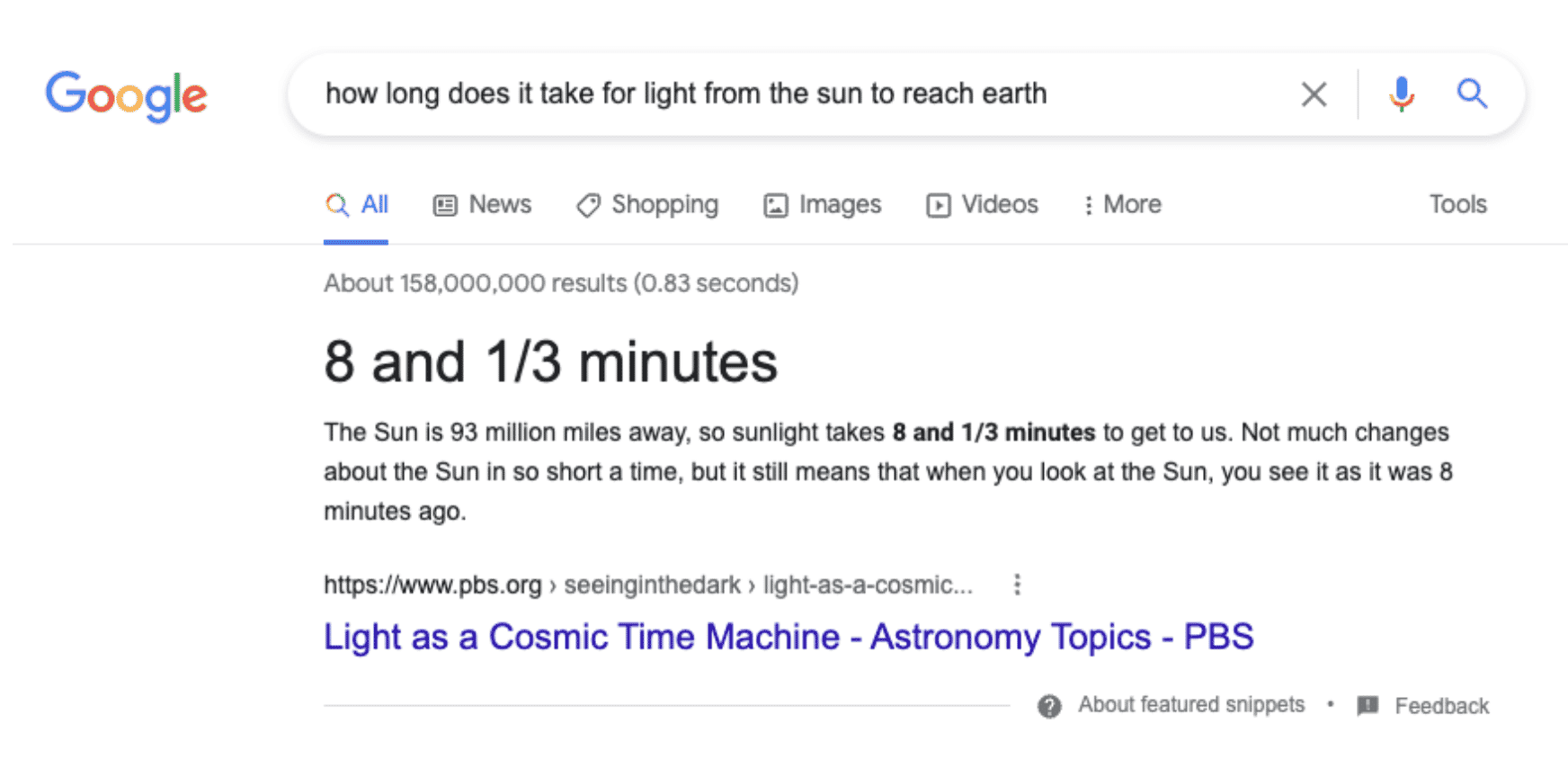Google has announced several new enhancements to Google Search today that focus on improving the overall quality of the search results, while at the same time helping searchers evaluate the search quality of the results presented to them.
Google has made improvements to featured snippets, its content advisories, and the about this result.
Featured Snippets callouts now uses MUM and general consensus
Featured snippets in Google Search will now use MUM to help understand if there is a general consensus for the information Google shows as callouts in these featured snippets. Google said that its “systems can now understand the notion of consensus” by using MUM, Multitask Unified Model.
MUM has not been used to date in too many applications within Google Search, limited to COVID vaccine names, Google Lens features and some other applications – more on that here, including now featured snippets.
Now, with the help of MUM, Google can understand if there is a consensus across the web to help highlight the callout portions of the featured snippets. Consensus-based techniques, according to Pandu Nayak, Vice President of Search and Fellow, Google, have meaningfully improved the quality of the featured snippet callouts. It is important to note that this does not come to mean that featured snippets will show facts, it does not necessarily do that but it does help improve the overall quality of featured snippets callouts.
Here is an example where Google’s featured snippet callouts are improved. In the screenshot below, Google will now highlight this callout, the word or words called out above the featured snippet in a larger font, to provide a better answer for the searcher.

Here is what this looks like without this feature:

Can consensus be spammed? Pandu Nayak explained these featured snippets are generally taken from the top-ranked results, so he is hopeful that those top-ranked results in Google Search are not spammy. It is important to note that consensus is not being used as a ranking factor but rather being used for callouts for featured snippets.
Fales premise queries reduced by 40%
Another advancement with featured snippets is around what Google calls “false premise” queries. Queries that may be inaccurate or factually incorrect but are nevertheless used by some searchers in Google Search. Google said it has improved what featured snippets it shows for queries that contain information for things that did not happen.
Google will now show you information that is accurate and remove the false part. Google said it will show fewer featured snippets that may show false or inaccurate information. Google said it reduced these occurrences for triggering featured snippets by about 40% in Google Search.
An example Google provided was for a search on [when did snoopy assassinate Abraham Lincoln]. Now, instead of showing information about snoopy, who obviously did not assassinate Abraham Lincoln, Google will ignore the snoopy part and show you the consensus on the web around this answer.
Pandu Nayak added that this also helps with the people also ask, since those are powered by featured snippets.
Here is how it might look:

Content advisories expanded to low confidence results
In April 2020, Google launched content advisories in Google Search with the aim of communicating to searchers that the search results are not 100% reliable either because they are new or Google does not have enough information about the topic yet.
Google said it is now expanding content advisories to searches where its systems don’t have high confidence in the overall quality of the results available for the search. Google said this “does not mean that no helpful information is available, or that a particular result is low-quality.” These notices provide context about the whole set of results on the page, and you can always see the results for your query, even when the advisory is present.

About This Result expanding as well
In February 2021, Google launched the about this result to communicate to searchers, before they click on the result, more information about that search result snippet they are looking at. Google has expanded the feature in terms of showing more details in more areas, as well as why the result is ranking for the query. Google now said this feature has been used over 2.4 billion times since it launched.
Later this year, Google is expanding in Pouguese (PT), French (FR), Italian (IT), German (DE), Dutch (NL), Spanish (ES), Japanese (JP), and Indonesian (ID) languages. Google also added the about this result to the Google app.
Google is also expanding what information is shown in the about this result, including how widely a source is circulated, online reviews about a source or company, whether a company is owned by another entity, or even when Google Search can’t find much information about a source.

The post Google steps up featured snippets with MUM; reducing false premise results by 40% appeared first on Search Engine Land.
from Search Engine Land https://ift.tt/M9v2rSE
via
No comments:
Post a Comment